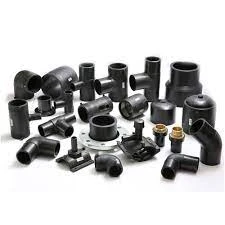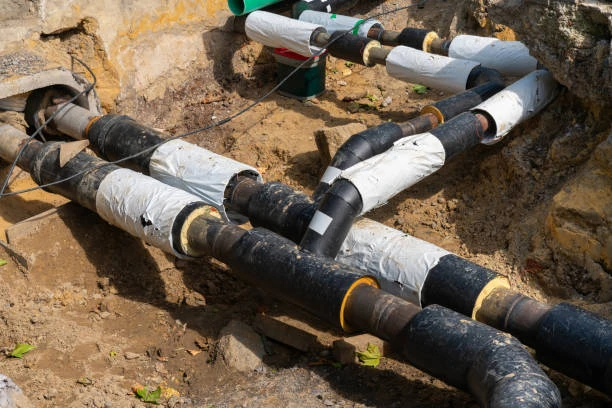
Key Features of HDPE Pipes and fittings
- Flexibility: They can bend without breaking, making them suitable for various terrains and installations.
- Low Friction: The smooth inner surface of HDPE reduces flow resistance, enhancing the efficiency of fluid transport.
Advantages of HDPE Pipes and Fittings
- Durability: With a lifespan exceeding 50 years, HDPE pipes require minimal maintenance.
- Environmental Impact: HDPE is recyclable, contributing to sustainable construction practices.
- Leak-Free Joints: The fusion joining process creates secure connections that minimize the risk of leaks.
Applications of HDPE Pipes and Fittings
- Water Supply Systems: HDPE Pipe and Fittings are widely used for drinking water distribution and irrigation systems.
- Sewage and Drainage: They are effective in waste management and stormwater drainage applications.
- Gas Distribution: Suitable for transporting natural gas and propane safely.
- Mining and Industrial Uses: Employed for transferring slurries, chemicals, and other industrial fluids.
Installation Process for HDPE Pipes and Fittings
1. Planning and Preparation
- Design the Layout: Carefully plan the piping layout, taking into account the specific requirements of the project.
- Gather Tools and Materials: Ensure you have all necessary tools, including a pipe cutter, fusion machine, and safety gear.
2. Measuring and Cutting
- Measure Accurately: Use a measuring tape to determine the required lengths for the pipes.
- Cut the Pipes: Utilize a pipe cutter to make clean cuts, ensuring precision.
3. Preparing the Fittings
- Inspect the Fittings: Check that all fittings are compatible and free from defects.
- Clean the Surfaces: Ensure the ends of the pipes and the insides of the fittings are clean for effective joining.
4. Joining Methods
- Electrofusion: Involves using fittings with built-in heating elements.
5. Testing the System
- Conduct Pressure Tests: After installation, perform pressure tests to check for leaks and ensure the system operates effectively.
6. Finalizing the Installation
- Secure the Pipes: Use supports and brackets to stabilize the pipes and prevent movement.
- Final Inspection: Check the entire system to ensure everything is installed correctly.
Conclusion
HDPE pipe and fittings offer a reliable and efficient solution for a variety of applications. With their durability, flexibility, and cost-effectiveness, they are becoming the go-to choice for modern plumbing and industrial systems. Understanding their features and installation processes can help you achieve a successful piping system that meets your needs.
FAQs
How do I identify a leak in HDPE pipes?
Regular inspections and pressure testing can help detect leaks in the system.
Are HDPE fittings easy to install?
Yes, with the right tools and techniques, HDPE fittings can be easily installed.

















